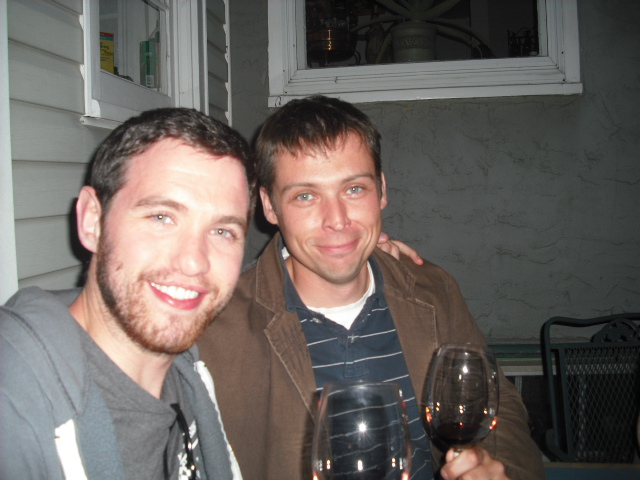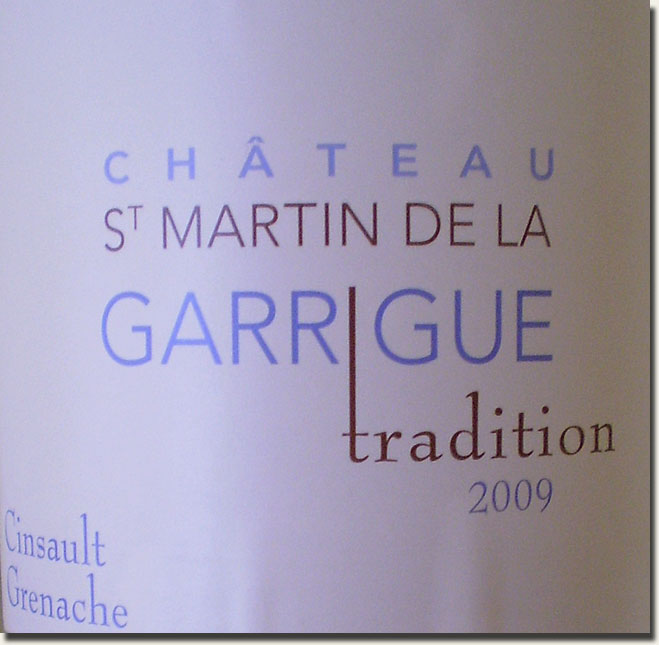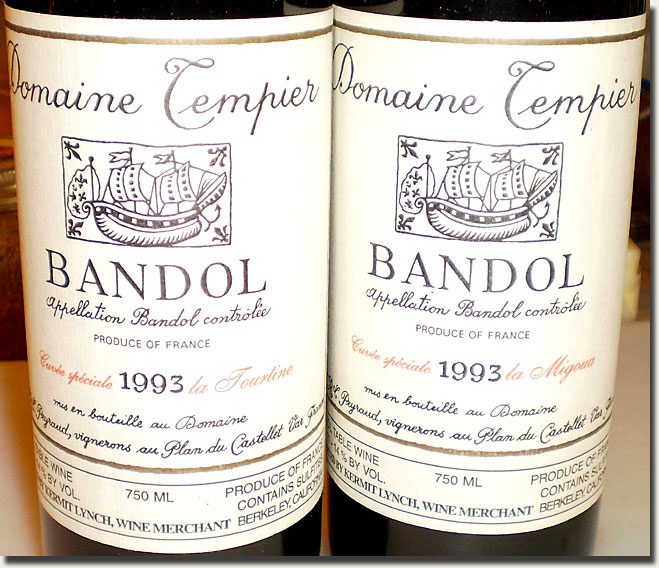Three 2008 Loire Whites
The more we drink the wines from France’s Loire Valley, be they red, white, pink or bubbly, the more we like them and the more we WANT to drink them. Despite the diversity of regions (there are 87 appellations and sub-appellations), there is usually a common thread that runs through them, and, at least for us, it’s based on the minerality that almost all seem to show. Our friends at Vineyard Brands sent us three samples for review recently, and each showed varying degrees of that stony quality that we’ve come to crave when we pour ourselves a glass of wine. We started out with a specimen of unlikely, but not-unheard-of, Loire Chardonnay. Read the rest of this entry »
Tweet & Taste on June 7th with Old Mission Peninsula Wineries
 MichiganByTheBottle’s June Tweet & Taste Michigan event will be held on Monday, June 7th at 8 p.m. EST, and will feature seven wines from one of Michigan’s most prolific wine producing appellations, the Old Mission Peninsula. Selections to be tasted include 2 Lads 2009 Pinot Grigio, Black Star Farms Sirius Cherry Dessert Wine, Bowers Harbor Vineyards 2006 2896 Langley (Meritage), Chateau Chantal 2009 Pinot Grigio, Chateau Grand Traverse 2008 Ship of Fools, Brys Estate 2007 Signature Red and Peninsula Cellars 2006 Gewurztraminer. Kim and I may even throw an OMP Riesling into the mix as well… Read the rest of this entry »
MichiganByTheBottle’s June Tweet & Taste Michigan event will be held on Monday, June 7th at 8 p.m. EST, and will feature seven wines from one of Michigan’s most prolific wine producing appellations, the Old Mission Peninsula. Selections to be tasted include 2 Lads 2009 Pinot Grigio, Black Star Farms Sirius Cherry Dessert Wine, Bowers Harbor Vineyards 2006 2896 Langley (Meritage), Chateau Chantal 2009 Pinot Grigio, Chateau Grand Traverse 2008 Ship of Fools, Brys Estate 2007 Signature Red and Peninsula Cellars 2006 Gewurztraminer. Kim and I may even throw an OMP Riesling into the mix as well… Read the rest of this entry »
Alan Kerr’s May 29th, 2010, Vintage’s Release – Tasting Notes
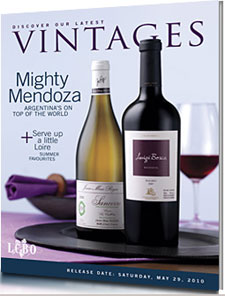 May 29th brings yet another cluster of Argentina wines to the shelves of the LCBO albeit several of which are very tasty and will work well with barbecued foods in this unusually timed, but most welcome, heat wave. In addition to the Argentinean release also in perfect time for this summertime heat, the second feature of the release showcases some exceeding good whites from the Loire Valley. One in particular is really dynamite and it sells for under twenty bucks. Read the rest of this entry »
May 29th brings yet another cluster of Argentina wines to the shelves of the LCBO albeit several of which are very tasty and will work well with barbecued foods in this unusually timed, but most welcome, heat wave. In addition to the Argentinean release also in perfect time for this summertime heat, the second feature of the release showcases some exceeding good whites from the Loire Valley. One in particular is really dynamite and it sells for under twenty bucks. Read the rest of this entry »
Book Review: “The Wild Vine” and the story of Norton
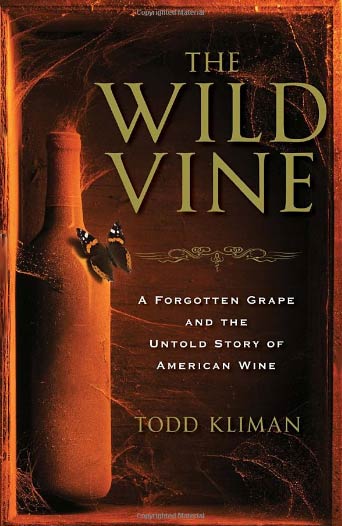 Diversity, as an element in wine appreciation, is one of those “good for you” concepts that almost everyone embraces, but few of us practice. Despite the existence of literally hundreds of different wine varieties in the main wine-grape genus of vitis vinifera, most wine drinkers limit themselves to drinking the same dozen or so varieties—cabernet, pinot noir, syrah, chardonnay, riesling, etc. Even the most adventurous of wine drinkers probably consumes no more than 2 or 3 dozen different varieties on a regular basis. And as for wine grapes that are outside the universe of vitis vinifera, well, those grapes might as well not exist at all. But are we missing something important by limiting ourselves so severely? In failing to appreciate (or even sample) the breadth of expressions available from wines off the beaten track, do we deprive ourselves not only of something pleasing, but also of something important in our cultural heritage?
Diversity, as an element in wine appreciation, is one of those “good for you” concepts that almost everyone embraces, but few of us practice. Despite the existence of literally hundreds of different wine varieties in the main wine-grape genus of vitis vinifera, most wine drinkers limit themselves to drinking the same dozen or so varieties—cabernet, pinot noir, syrah, chardonnay, riesling, etc. Even the most adventurous of wine drinkers probably consumes no more than 2 or 3 dozen different varieties on a regular basis. And as for wine grapes that are outside the universe of vitis vinifera, well, those grapes might as well not exist at all. But are we missing something important by limiting ourselves so severely? In failing to appreciate (or even sample) the breadth of expressions available from wines off the beaten track, do we deprive ourselves not only of something pleasing, but also of something important in our cultural heritage?
These thoughts kept going through my mind as I read The Wild Vine: A Forgotten Grape and the Untold Story of American Wine, author Todd Kliman’s paean to the Norton grape. But the book is not a dry, technical description of the grape’s discovery and evolution, nor is it a tasting guide. Instead, it is a history of a specific fragment of wine making in America, viewing it through the earliest efforts of the Jamestown colonists, the dedicated efforts of America’s greatest early wine advocate Thomas Jefferson, and on to the rise of the wine industry in Missouri, the center of American wine industry before California began to rise in importance in the final decades of the 19th century. In telling the history of the Norton grape, Kliman reveals a fascinating slice of American history that places wine as a significant cultural element in both early American history, and in the expansion of America into the Midwest and beyond by wine-loving German immigrants in the mid-1800’s. The result is an appreciation of wine’s significance in America that predates the much better known history of California’s wine industry. Although the efforts of the early missionaries and other wine growers in California are usually thought to be the beginning of serious wine cultivation in America. Kliman’s book documents a significant part of the history of wine making in America before California took over the stage.
Viticulture Students’ Strip Down
I truly have a great job. I get to teach what I love to do. My campus, in the heart of Niagara’s wine country, primarily delivers cooking, horticultural and viticulture programs. Hell, we are even starting up a Brewmeister program in the fall. One of my former students from Fanshawe College, Ben Andrew, who graduated Culinary Management program moved down to Niagara and enrolled in the wine making program.
Ben introduced me to some of his classmates and I have, on several occasions, tasted a wine or two with them. Now I figured it was my time to pull a few corks and play the role of host. Read the rest of this entry »
Touring California Wine Country ~ 2010
Five appellations, with six appointments in fourteen days. That was our calendar in late April through early May, and we couldn’t have asked for a finer return to California wine country for the first time since 2002. We decided right from the get-go that we were going to do it right this time; no exhaustive three of more appointments per day, and not even one appointment every day. We were going to enjoy ourselves, take our time, see some of the state and concentrate on a select group of producers, two of whom were new to our experience and three with whom we were very familiar.
Our travels took us to Napa Valley, Dry Creek Valley, Mendocino County, Paso Robles and the Santa Cruz Mountains. On off days, we simply toured or renewed acquaintances with old friends like Allan Bree, Frank Joyce and John and Pat Wolf. And of course, there was never any lack of good food and wine, as we’ve already detailed with recent blog entries.
Our site visits were all marvelous, and included appointments with John Olney at Ridge Lytton Springs, Julie Johnson at Tres Sabores, Mario and Danelle Storm Rosati at Rosati Family Winery, Jason Haas at Tablas Creek Vineyard, Paul Draper at Ridge Monte Bello and Sean Thackrey at his barn… OK, it’s REALLY Sean’s office-auxiliary storage facility outside of Bolinas and equipped with a kitchen many would envy.
We made extensive use of the video camera, and indeed, some of our reports could have stood on that footage alone – candid as they are, but there are always anecdotes and tasting notes to be included.
Our trip report begins in reverse, with accounts of our last two visits, with Paul Draper and Sean Thackrey. We met with the two of them just a few days apart, and couldn’t help but be struck by the differences in style and technique of these two otherwise brilliant winemakers. Subsequent reports will follow individually in quick succession. Read the rest of this entry »
Three French Rosés
There’s nothing quite like drinking good French rosé in Napa Valley in the springtime. I don’t mean that in a smarmy thumb-your-nose-at-Napa-because-the-French-make-better-rosé-than-the-locals-do kind o’ way, because that’s not necessarily true. It’s just that there’s something amusingly ironic about going to the heart of California wine country, only to drink French wine as the weather warms and the growing season starts to get into full swing. It also bears pointing out that these three cost less than anything made locally that we happened to run into, not that we searched every nook and cranny in a quest to price comparatively. These three are simply the ones that looked the best to us in our travels, so they’re the ones we bought, and as it turns out, all were quite satisfying, starting with a producer that’s new to us. Read the rest of this entry »
Two ’93 Domaine Tempier Bandols
On our last night in Napa, we took Allan Bree to dinner at Bistro Jeanty, a delightful restaurant in Yountville that he had introduced us to during our last trip out. Allan brought along two equally delightful wines from one of our very favorite producers, Domaine Tempier in Bandol, which we proceeded to enjoy with a succession of delicious appetizers and entrees, including Chef Jeanty’s famous cream of tomato soup, deep fried Great Lakes smelt, a marvelous artichoke heart terrine with lemon pesto, Epaule De Porc (slow roasted pork shoulder), steak tartare and a lovely little duck tart. Read the rest of this entry »





